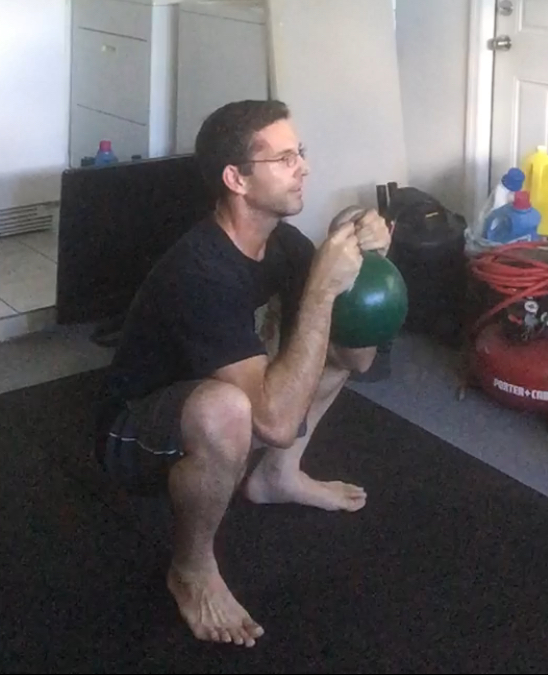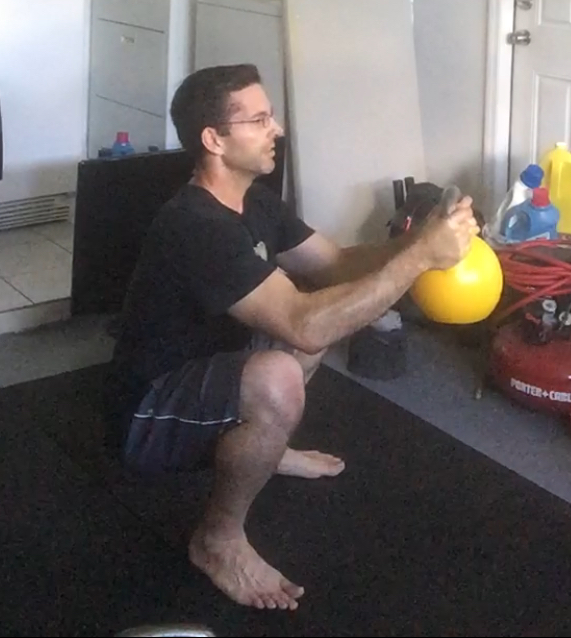SuperGirevik
Level 3 Valued Member
I recently made it a goal to attack my weakness, the squat. I used to try to squat deep but felt a little pain in my hip area and it made squatting dreadful. But I was determined to overcome this obstacle.
I started to apply the “lock and rock” (link) to my squat and did the some half-kneeling pulses (link) suggested by @Brett Jones. I also did some rocking movements shown in this Original Strength video.
Then I disciplined myself by making sure I never skipped the prying goblet squat in my daily training.
One thing that helped a lot was adjusting how wide I was positioning my feet. I used to think that I needed to position my feet wide to open up my hips and allow for a deeper descent. But then one day I tried a narrower stance, about shoulder width, and I noticed I was able to go low without pain. I can even stay deep in my squat and breath calmly... until arms tire from holding the kettlebell. My back felt straight but I noticed after a while, my back was starting to feel slightly sore. So that’s when I started to take pictures and I do in fact curve my back a bit in the lowest point.
Here is my latest progress...

I noticed when I extend my arms out (a drill I learned from Louka Kurcer), I seem to maintain my back in a better upright position... and as a bonus, my core is on fire.

I’d love to get any feedback or tips to get a better squat and finally turn my weakness into a strength. Thanks in advance
I started to apply the “lock and rock” (link) to my squat and did the some half-kneeling pulses (link) suggested by @Brett Jones. I also did some rocking movements shown in this Original Strength video.
Then I disciplined myself by making sure I never skipped the prying goblet squat in my daily training.
One thing that helped a lot was adjusting how wide I was positioning my feet. I used to think that I needed to position my feet wide to open up my hips and allow for a deeper descent. But then one day I tried a narrower stance, about shoulder width, and I noticed I was able to go low without pain. I can even stay deep in my squat and breath calmly... until arms tire from holding the kettlebell. My back felt straight but I noticed after a while, my back was starting to feel slightly sore. So that’s when I started to take pictures and I do in fact curve my back a bit in the lowest point.
Here is my latest progress...

I noticed when I extend my arms out (a drill I learned from Louka Kurcer), I seem to maintain my back in a better upright position... and as a bonus, my core is on fire.

I’d love to get any feedback or tips to get a better squat and finally turn my weakness into a strength. Thanks in advance

